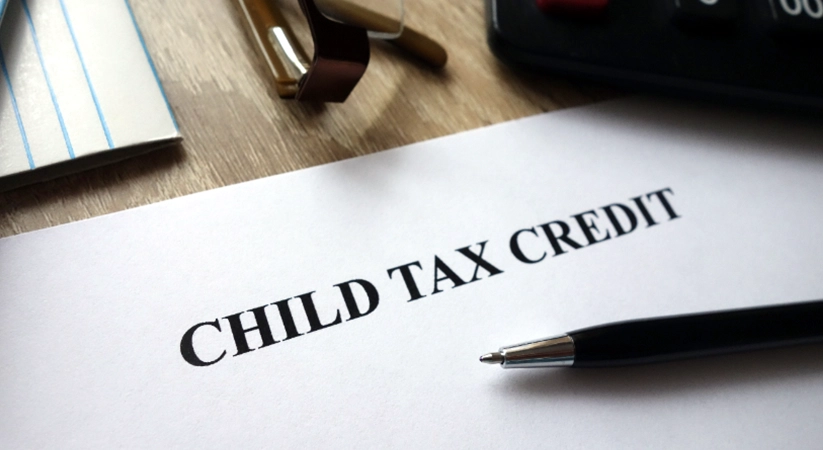What Every Parent Needs to Know About the Child Tax Credit (and the Update Portal)
Published:
Just because the monthly check is gone, the tax credit isn’t.
Parents should be aware that the Advance Child Tax Credit payments, which were monthly payments from the Internal Revenue Service, discontinued and as of 2023, the Child Tax Credit Update Portal is no longer available.
While direct deposit stimulus checks might no longer be a thing, the Child Tax Credit itself is very much available. You might not be able to get advance child tax credit payments, but when it comes to tax filing season for 2023, you should definitely still file for this valuable credit.
The Update Portal once offered several functionalities, including the ability to update income details, review payments made and scheduled, and modify mailing addresses. However, parents couldn’t change filing status, the number of eligible children, or their social security number through the portal.
The Child Tax Credit Update Portal Is No Longer Available — But You Can Still Get the Credit
The Child Tax Credit Update Portal was a valuable tool for parents who needed to make changes to their child tax credit payments. However, as of 2023, the CTC Online Portal is no longer available.
Nevertheless, eligible parents can still receive the federal credit, which is designed to help families with children reduce their tax obligations and improve their financial situation. While the online portal made it easy for parents to manage their payments and update their information from almost any type of device, there are still other ways to stay informed about the changes to the child tax credit program.
Whether you file your taxes online or with the help of a tax professional, understanding the child tax credit program and its benefits can help you make the most of this valuable government-assisted program.
The Child Tax Credit Could Be Worth Thousands to You
The Child Tax Credit is a valuable tax benefit that can be worth thousands of dollars to eligible families every year. The credit is calculated based on the number of eligible children in a household and their ages. Families can receive up to $3,600 per child under age 6 and up to $3,000 per child ages 6 to 17.
To qualify for the credit, families must meet certain requirements, including having a dependent child who is under age 18 living with them for more than half the year. The credit is also income-based, so families with higher incomes may receive a reduced credit.
The American Rescue Plan signed into law in 2021 expanded the Child Tax Credit to make it more accessible and valuable to low-income families. The credit is partially refundable, so families who do not owe taxes can still receive $1,600 out of the $2,000 available per qualifying dependent. In addition, advance child tax credit payments of the credit were distributed in monthly payments during part of the pandemic, allowing families to receive the funds in real time and make use of them as needed.
The monthly child tax credit payments might be gone, but families that meet the eligibility requirements can claim it when filing their federal income tax return. The child tax credit could be worth thousands to you and your family, so be sure to explore your options for claiming this valuable tax benefit.
Advance Payments of the CTC No Longer Available
Advance payments for the Child Tax Credit (CTC) stopped and the online tool for managing child tax credits and claiming direct deposit payments has closed.
That said, it’s essential to check eligibility requirements to determine if you qualify for the Child Tax Credit. Parents must have dependent children under the age of 18 living with them for more than half the year, with adjusted gross income under a specified limit, to qualify for the credit for their taxes in the 2023 filing season. While stimulus payments and advance Child Tax Credits are no longer available in 2021, eligible taxpayers can still receive the benefit when they file their income tax returns in 2023, even if the online application is gone.
The Basics Behind How the Child Tax Credit Works
The Child Tax Credit is a tax benefit that helps low-income families with children under the age of 18. It works by reducing the amount of taxes owed to the government on a dollar-for-dollar basis. Eligible taxpayers can claim up to $2,000 per qualifying child per year.
To be eligible for the Child Tax Credit, parents must have a dependent child who is a qualifying child. Qualifying children are those under the age of 18 who live with the taxpayer for more than half the year and who are claimed as a dependent on the taxpayer’s tax return.
There are income limits for the credit, with adjusted gross income being a factor. The credit is limited to single filers with an AGI less than $200,000 and for joint filers with an AGI less than $400,000.
The Child Tax Credit is partially refundable, which means that if the credit exceeds the taxes owed, the taxpayer can receive the excess amount as a refund. This makes the credit an important tool for families living with children in poverty.
How to Qualify for Child Tax Credits
The Child Tax Credit (CTC) is a federal tax credit designed to provide financial support to families with dependent children. It’s a great way to reduce your tax liability and potentially increase your refund. There are certain requirements that must be met in order to qualify for this tax credit.
Qualifying Dependents
Qualifying dependents are an essential component of the Child Tax Credit (CTC). These individuals are U.S. citizens, nationals, or resident aliens who have lived with you for more than half the year as of the tax year. Dependents can only be claimed on your tax return if they meet the eligibility criteria set by the Internal Revenue Service (IRS).
The qualifying dependents for the CTC include children who are your biological or adopted child, stepchild, foster child, sibling, stepsibling, or a descendant of any of these. A qualifying child must meet the age requirement; they must be under the age of 17 at the end of the tax year.
The CTC also allows for other qualifying dependents, such as parents, grandparents, nieces, or nephews who meet certain criteria. To claim these dependents, you must meet certain residency and support tests. They need to have lived with you for at least half the year, they need to have been claimed as a dependent (and cannot have filed a joint return with you.) You must have provided at least half of the child’s support during the last year.
It’s important to note that only one individual can claim a qualifying dependent as a dependent on their tax return. If you and another individual both qualify to claim the same dependent, you’ll need to determine who will claim the dependent.
Income Limits and Thresholds
The maximum child tax credit for a qualifying dependent will remain at $2,000 for the 2023 tax year, with taxes to be filed in 2024. The partially refundable amount increases to $1,600 .
The credit amount is subject to reduction if your modified adjusted gross income exceeds the specified limits. For married couples filing jointly, the limit is $400,000 or below, while for all other filers, it is $200,000 or below. The credit amount is reduced by $50 for each $1,000 of income exceeding the threshold until it is eliminated.
The CTC is a tax credit that can lower your tax amount and has a partially refundable component known as the “additional child tax credit” by the IRS, which allows for a potential refund up to $1,500.
Child Tax Credit vs the Dependent and Child Care Tax Credit
The Child Tax Credit, Dependent Tax Credit, and Child Care Tax Credit are three different tax credits that help families with children. The Child Tax Credit provides up to $3,600 per child for eligible families. To be eligible, the child must be under 17 at the end of the tax year, be claimed as a dependent, live with the taxpayer for at least half the year, and have a social security number. The Dependent Tax Credit provides up to $500 per dependent for eligible taxpayers who cannot claim the Child Tax Credit. Dependents can be children over 17, elderly relatives, or other dependent relatives.
The Child Care Tax Credit, on the other hand, provides a credit of up to $3,000 per child to help cover the cost of child care so the taxpayer can work or look for work. The child must be under 13 and the taxpayer must have earned income. There are income limits for all three credits, and certain expenses qualify for each. It’s important to understand the differences between these credits to determine which one(s) you may be eligible for.
Which Form Should I Use to Claim the CTC?
To claim the Child Tax Credit (CTC), there are different forms you can use depending on your eligibility and circumstances. The most common form used is Form 1040, which is for general tax purposes. If you are 65 or older, you can opt to use Form 1040-SR.
If you have one or more qualifying children, you may also need to complete Form 8812 to claim the additional credit. To be eligible for the CTC, your child must be under the age of 17 and meet other qualifying criteria.
To fill out the forms correctly, be sure to provide accurate and complete information about your income, dependents, and other relevant details. If you are not sure which form to use or how to complete it, consult with a tax professional or use tax software.
Overall, knowing which form to use and how to fill it out correctly is essential for claiming the CTC and receiving the tax benefits you are eligible for.



